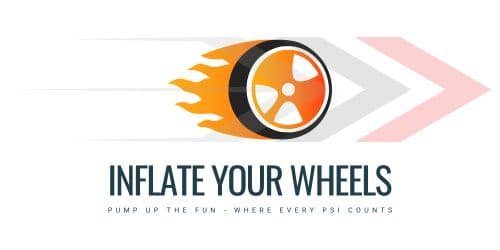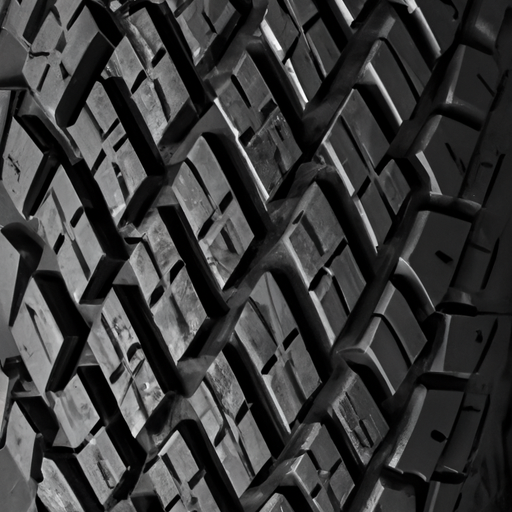Foam filled tires have gained popularity in recent years for their ability to provide a cushioned and puncture-proof alternative to traditional air-filled tires. However, while these tires offer numerous advantages, it is essential to consider their disadvantages as well. In this article, we explore the potential drawbacks of foam filled tires, examining factors such as reduced shock absorption, increased weight, and limited availability. By understanding both the pros and cons of foam filled tires, one can make an informed decision about whether they are the right choice for their specific needs.
Disadvantages Of Foam Filled Tires?
Table of Contents

Limited Suspension and Cushioning
Foam filled tires have reduced shock absorption capabilities compared to traditional air-filled tires. This means that when we drive over bumps or potholes, we will feel more of the impact. The ride becomes less comfortable, especially on uneven or rough roads. Additionally, the increased impact on the vehicle and driver can lead to a higher risk of damage and discomfort.
Increased Weight
Foam filled tires are heavier than air-filled tires, which can have several negative implications. First, the additional weight affects the fuel efficiency of the vehicle. With every mile driven, more fuel is needed to overcome the extra weight, resulting in decreased mileage. Second, the added strain on vehicle components, such as suspension and brakes, can cause accelerated wear and tear. Finally, the increased weight impacts acceleration and braking, making these maneuvers less efficient and potentially compromising safety.
Limited Traction
While foam filled tires provide decent grip on dry surfaces, they may not perform as well on wet roads. The reduced traction on wet surfaces can lead to longer stopping distances and an increased risk of skidding or hydroplaning. Similarly, on loose terrains like gravel or sandy roads, foam filled tires may have lower traction, causing reduced control and stability. In snowy or icy conditions, foam filled tires can be especially problematic, offering poor performance and compromising safety.
High Cost
One of the major drawbacks of foam filled tires is their expensive initial investment. Compared to traditional air-filled tires, foam filled tires can be considerably more expensive to purchase. Moreover, the recurring replacement and maintenance expenses add to the overall cost. Unlike air-filled tires, which can be easily repaired or replaced, foam filled tires often require complete replacement when damaged. Limited availability and variety of foam filled tires can further increase the overall cost.
Difficulty with Mounting and Removal
Installing and removing foam filled tires can be a challenging task. Specialized equipment is required to mount these tires onto the rims, making it a time-consuming and potentially frustrating process. Additionally, the expertise and assistance of professionals are often necessary to ensure the tires are properly mounted and balanced. This adds an extra layer of inconvenience and cost when it comes to installing or changing foam filled tires.
Lack of Customization
Foam filled tires typically have limited size options, which can be a disadvantage when it comes to finding the right fit for our vehicle. Furthermore, unlike air-filled tires, foam filled tires lack the ability to adjust tire pressure. This means that we cannot optimize the tire pressure based on the load or specific driving conditions. Additionally, foam filled tires cannot be easily modified for specific applications, limiting their versatility in various driving scenarios.
Potential for Heat Build-up
One of the risks associated with foam filled tires is their potential for heat build-up. Due to their construction, foam-filled tires tend to retain more heat than air-filled tires. The increased heat retention can lead to a higher risk of tire failure or blowouts, especially when driving long distances or at high speeds. Moreover, the excess heat can also pose a higher risk of damage to both the tire and the vehicle. This can result in additional maintenance and repair costs.
Compromised Handling and Maneuverability
Foam filled tires can compromise the handling and maneuverability of a vehicle. Due to their reduced responsiveness, the vehicle may feel less agile and nimble on the road. The increased rolling resistance of foam filled tires also negatively affects acceleration and braking, requiring more effort from the driver. Additionally, the impaired cornering ability can make it more challenging to navigate turns or corners smoothly and safely.
Environmental Impact
One significant disadvantage of foam filled tires is their negative environmental impact. Unlike air-filled tires, foam filled tires are made from non-biodegradable materials, which means they do not break down naturally over time. Additionally, these tires are difficult to recycle, often ending up in landfills or being incinerated, contributing to pollution and waste. The environmental consequences of foam filled tires highlight the need for more sustainable alternatives.
Limited Temperature Range
Foam filled tires have a limited temperature range in which they can effectively perform. In extremely cold conditions, these tires may freeze, becoming less flexible and compromising their traction. This can lead to decreased control and potentially hazardous driving conditions. On the other extreme, in high-temperature environments, foam filled tires are vulnerable to heat damage. The excessive heat can degrade the tire’s integrity, potentially causing it to fail or burst, posing serious safety risks.
In conclusion, while foam filled tires offer certain advantages such as puncture resistance and greater convenience, they also come with several disadvantages. The limited suspension and cushioning, increased weight, and compromised traction can negatively impact the ride quality and safety of the vehicle. The high cost, difficulty with mounting and removal, lack of customization options, and potential heat build-up further contribute to the drawbacks of foam filled tires. Moreover, their limited temperature range and negative environmental impact highlight the need for alternative tire options that address these concerns. Ultimately, the decision to choose foam filled tires should be carefully weighed against these disadvantages and individual driving needs and preferences.


